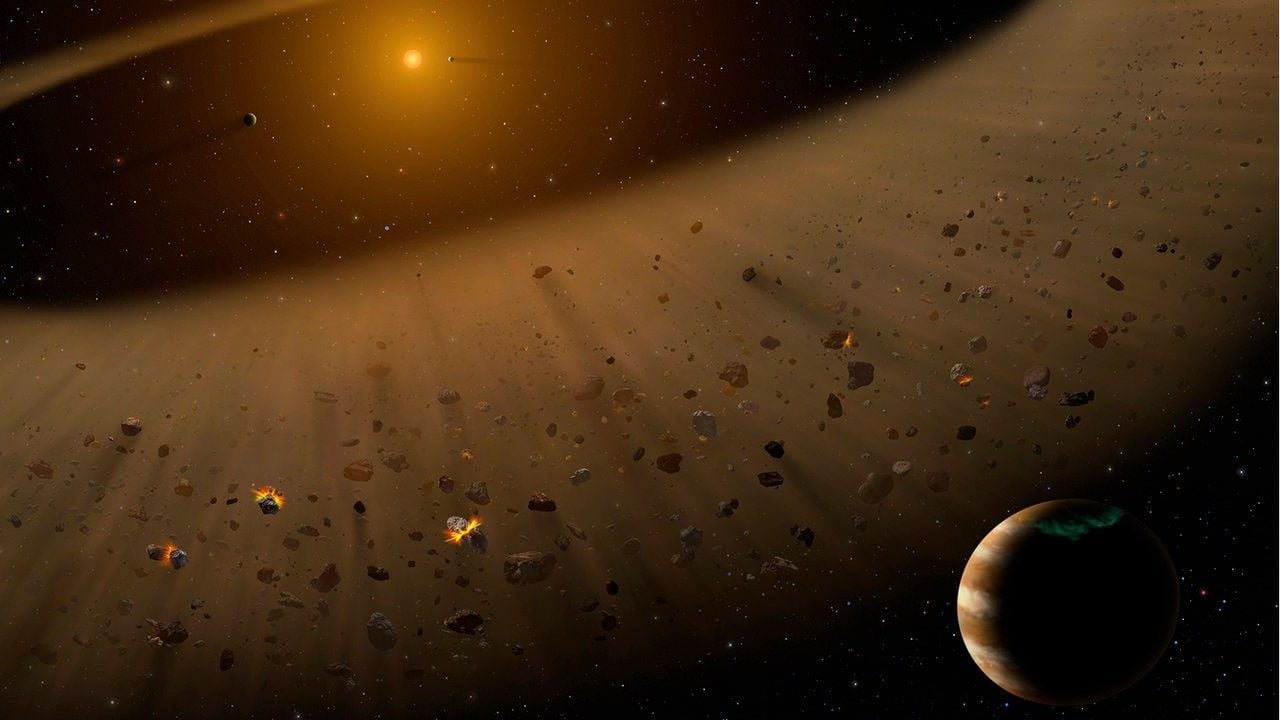Sometimes in science a negative result is just as important as a positive one. And sometimes data artifacts get the better of even the best space observatories. Both of those ideas seem to hold true for the James Webb Space Telescope’s recent observation of Epsilon Eridani, one of our nearest stars, and one that has decades worth of debate about whether there is a planet orbiting it or not. Unfortunately, while JWST’s NIRCam did find some interesting features, they were too close to a noise source in the telescope’s instruments to be definitively labeled a “planet”. Their results were recently published on arXiv, and while it may sound disappointing, this type of work is exactly how science progresses.
JWST’s observations, which were part of a program that provides defined time on the telescope to specific astronomical objectives, were intended to search for evidence of two planets orbiting Epsilon Eridani, a star located about 10.5 light years away and only about 400 million years old. The first planet, which was originally claimed in 2000 using radial velocity measurements of the star, was about Jupiter size, located about 3.5 AU from the star. Another, which has so far been unconfirmed, might be shepherding the dramatic rings that surround the star, and would be around 45 AU out from its host star.
In the search for the first planet, Epsilon Eridani b, NIRCam saw a “blob” that looked very much like a planet, right where the researchers expected to find it. However, it was also very near a “hexpeckle”, an artifact of the corongraph that flooded the area of the planet with noise. Ultimately, they could not statistically say that a planet was definitively there, despite the promising “blob” of light, given the overwhelming noise from the instrument itself.
A tour of the Epsilon Eridani system. Credit – Paul Fellows YouTube Channel
The second potential candidate was much more convincingly ruled out. While the statistics weren’t enough to definitively rule out all planets, they were conclusive enough to say there are no Saturn-sized planets any further out the 16 AU from the star. In other words, there doesn’t appear to be a ring shepherd around Epsilon Eridani.
Peering at the dust disk itself, NIRCam found a faint signal on the “eastern” side of the star. That appears to be the side facing us directly, and therefore the signal is most likely just the dust from the disc scattering the light from the star rather than a planet, similar to how gas and dust can shroud stars themselves in some parts of space.
All of this work was done using a new technique for JWST called a “three-roll” observing strategy. So far during its observations, the telescope had “rolled” to two different angles to make sure it captured light coming from its observational target in slightly different ways. For these observations, it tried doing so a third time, and had a pretty significant gain in observational capacity as well. The authors suggest that the technique could improve JWST’s ability to see faint objects by between 20-30% than the traditional two-roll method.
A discussion of JWST’s instruments, including NIRCam. Credit – Launch Pad Astronomy YouTube Channel
While some might consider the lack of a definitive planet detection a bust, science still moves forward on constraints, and this observational effort by JWST did put some constraints both on the potential of a planet in the out reaches of Epsilon Eridani’s system as well as the size and location of the inner Jupiter-like planet candidate. But perhaps most importantly, it also opened up a new methodology to allow for increased observational capacity of faint objects in the future. Given JWST’s long operational life ahead, that is definitely worth celebrating.
Learn More:
J. Llop-Sayson et al – Searching for Planets Orbiting Epsilon Eridani with JWST/NIRCam
UT – Astronomers Try to Directly Observe Epsilon Eridani b. No Luck. Maybe Webb Can Find it?
UT – Only 10 Light-Years Away, there’s a Baby Version of the Solar System
UT – Webb Examined an Asteroid Belt and Found More Than it Bargained For
